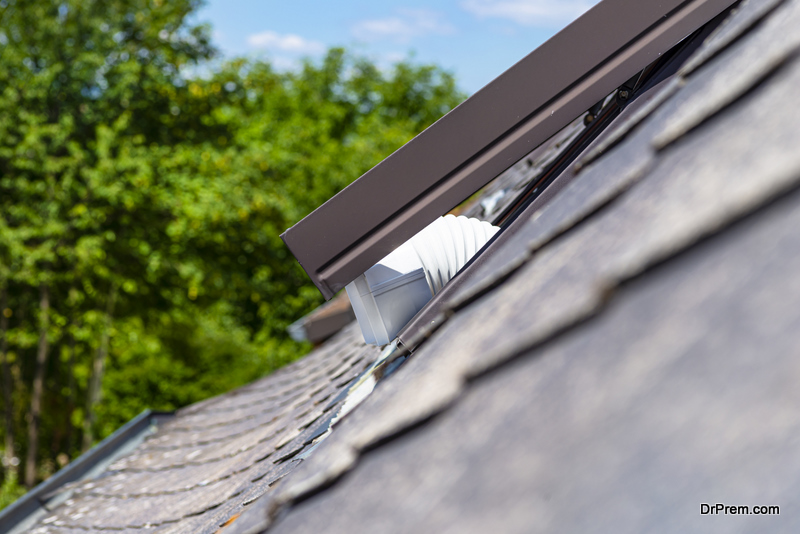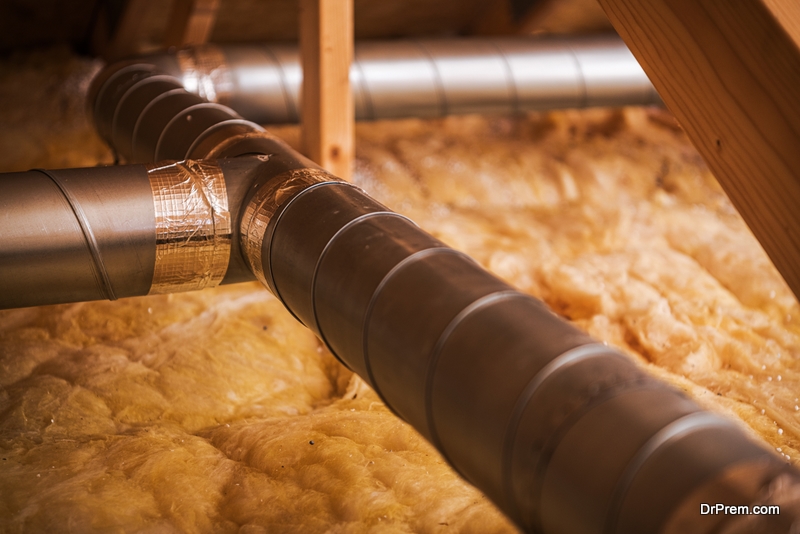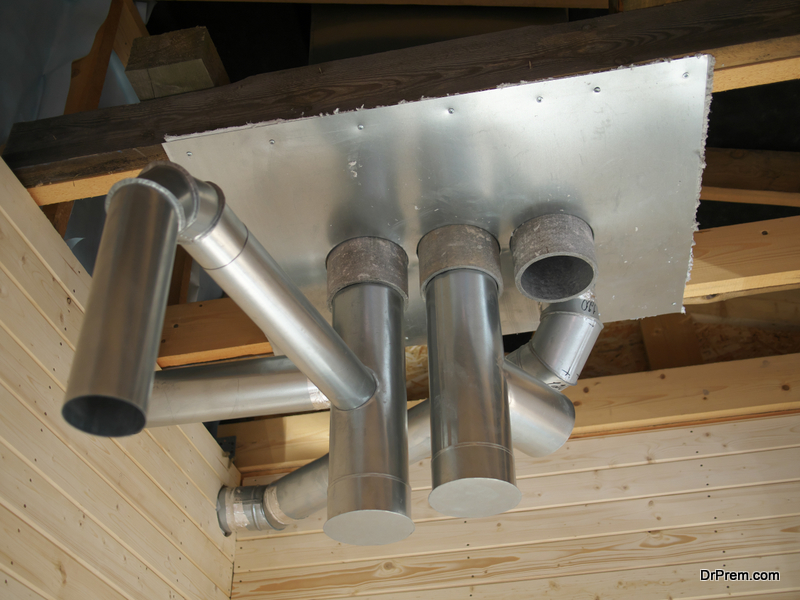The goal of every homeowner should be to run a more energy-efficient home because it not only helps our planet, in many cases, it also helps the homeowner save money. Whole house fans are an embodiment of this concept and form the subject of our conversation today.
What are Whole House Fans?
 Whole house fans are large fans that work pretty much the same as air conditioning except that they are more efficient. Also known as attic fans, whole house fans are typically installed in the attic and connected to the ceiling at the highest floor of your house.
Whole house fans are large fans that work pretty much the same as air conditioning except that they are more efficient. Also known as attic fans, whole house fans are typically installed in the attic and connected to the ceiling at the highest floor of your house.
Now, if you paid attention in your physics class, you’d know that hot air rises. This is the principle upon which whole house fans function.
As the hot air rises, whole house fans draw the (stale, polluted) air out of your house and into the attic. This creates some pressure in the attic that pushes the hottest air outdoors through the vents of the attic, giving room for fresh, cooler air to get into the house.
Do Whole House Fans Work?
Whole house fans indeed work but that does depend on two conditions.
First, whole house fans are more effective when the air outdoors is cooler than the air indoors. Secondly, the outdoor air ought to be at low humidity which is usually characteristic of drier climates.
Logically, if the outdoor air is hotter than the air inside your house, then you, obviously, wouldn’t enjoy the cooling effect you were going for when you installed a whole house fan. But that’s the thing about fans. Even if you don’t get the cooling effect, the breeze effect on the skin would still give a pleasurable feeling of satisfaction.
With these factors in consideration, therefore, buying and installing whole house fans might be a better idea for people who live in drier climates with large temperature differences from day to night.
Are Whole House Fans Worth It?
 There are two ways you can use whole house fans. You can decide to use them as the only source of cooling in your home. You can also use them together with air conditioning, reserving their use for spring and fall alone. Using both methods can help to bring the right balance between cost and comfort.
There are two ways you can use whole house fans. You can decide to use them as the only source of cooling in your home. You can also use them together with air conditioning, reserving their use for spring and fall alone. Using both methods can help to bring the right balance between cost and comfort.
Besides that, comparing all cooling options, whole house fans are a more cost-effective option.
Whole house fans typically cost between $150 and $350 dollars to buy. In comparison, buying a window unit AC can cost up to $750 while a central AC can cost as high as $4000, the cheapest being at least $2000.
But the benefits don’t end at the upfront cost. Running costs are also more affordable with whole unit fans. If you’re working with a standard 2-ton air conditioner, for instance, you’d be spending at least $250 per cooling season. That is, assuming a rate of 20 cents per runtime hour. Window unit air conditioners are only a little cheaper to run, costing about 17 cents per hour.
On the other hand, whole house fans with a range of ¼ to ½ horsepower, operating at 120 to 600 watts cost 5 cents per hour to run at the most.
The savings you can make are obviously huge!
Lastly, there is the benefit of evaporative cooling. Even if the outdoor and indoor temperatures are the same or the outdoor temperature is slightly warmer, whole house fans give the breeze effect.
You’d feel the same as if you were sitting on your porch with a ceiling fan on. So, even if the fan isn’t pulling in cool air, the breeze coming in would still cool you down some.
How Many Windows Need to Be Open for A Whole House Fan?
To get the best out of your whole house fan, you want to make as many openings in your home as possible.
First, you want to ensure that there is enough attic venting. You also want to make sure you open a sufficient number of doors and windows as well.
This is important so that your fan can circulate air much faster and more easily. If your whole house fan has to work too hard to circulate air because there aren’t enough openings in your home, it won’t be as effective.
To get even more from your whole house fan, combine it with some ceiling fans and the cooling effect will be enhanced.
How Do You Choose a Whole House Fan?
 Here are factors to consider before getting a whole house fan:
Here are factors to consider before getting a whole house fan:
1. Size
Sizing a whole house fan for your house can be a little complicated and even involves a bit of calculation. If math is not your strong point or you can’t be bothered to do the calculation, you can speak to a professional to help you.
But here’s the summary…
The Cubic Feet per Minute (CFM) rating of your whole house fan should be two-thirds of the volume of your house. And here’s how to calculate the volume of your house: multiply floor space by the height of your ceiling.
2. Location
The best spot to install your fan is in-between the top floor and the attic. There should be enough space in the vents for the air to dissipate the pressure.
Professionals recommend that you have a square foot of open vent area per 750 CFM (http://www.engext.ksu.edu/la/fans).
So, say your fan comes with a 3,000 CFM rating, you need four feet square open vent area. Now, note that if your vents come with insect screening, you’d need more space because insect screening cuts your space by 50%.
3. Belt-Drive vs Direct-Drive Models
There are benefits and drawbacks to each of these models.
Direct-drive fans are quieter and cost less to maintain than belt-drive models. However, belt-drive whole house fans are more efficient. Plus, they come in larger size options than direct-drive models.
4. Flexible Controls
Buying a fan with flexible controls makes it much easier to operate your fan. This way, you can adjust fan speed based on the prevailing temperature.
Whole house fans that come with timers are also a great idea. You can set your fan to come on and turn off at preselected times without having to touch it.
One Last Tip
 As the winter months approach, you should plan to seal off your attic fan. Doing this would keep the heated air from leaving the house.
As the winter months approach, you should plan to seal off your attic fan. Doing this would keep the heated air from leaving the house.
A very simple way to do this is to install a weatherization kit. Just follow the instructions that come with your kit and installation/uninstallation should be easy.
Article Submitted By Community Writer




